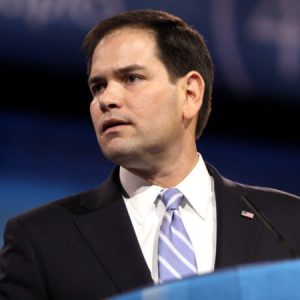Rep. Alexandria Ocasio-Cortez (D-NY), widely known for her progressive views and vocal critiques of conservative policies, recently found herself at the center of controversy over an economic claim regarding tariffs and coffee prices. The congresswoman suggested that former President Donald Trump’s proposed tariff on Colombian goods would directly result in American consumers paying significantly higher prices for coffee. However, economic experts and fact-checkers quickly challenged her assertion, sparking a broader debate about the real impact of tariffs on international trade and domestic inflation.
AOC’s Statement and the Context of the Tariff Debate
The controversy began when Trump and Colombian President Gustavo Petro had a diplomatic disagreement over the deportation of illegal immigrants. Initially, Petro resisted accepting deportees directly from the U.S. back into Colombia. In response, Trump threatened a 25 percent tariff on all Colombian imports, putting pressure on the South American nation to comply. Shortly after, Petro’s government relented, agreeing to accept deportees rather than risk damaging its economic relationship with the U.S.
As part of her criticism of Trump’s policy, Ocasio-Cortez took to X (formerly Twitter) to condemn the tariff threat, arguing that it would ultimately burden American consumers rather than the Colombian government. In her post, she stated:
To ‘punish’ Colombia, Trump is about to make every American pay even more for coffee. Remember: WE pay the tariffs, not Colombia.”
She further insinuated that Trump’s policy decisions were not in the best interest of the American working class but instead served to benefit the wealthy elite, writing:
Trump is all about making inflation WORSE for working-class Americans, not better. He’s lining the pockets of himself and the billionaire class.”
This statement echoed broader Democratic concerns that Trump’s tariff policies could contribute to inflation, a topic that has been a major political talking point as both parties position themselves on economic issues ahead of the upcoming election cycle.
The Fact-Check: Who Actually Pays Tariffs?
Following AOC’s post, fact-checkers and economic analysts were quick to challenge her claim that tariffs are directly paid by American consumers. Breitbart News economics editor John Carney led the rebuttal, explaining that the assumption that tariffs always result in higher consumer prices lacks strong empirical support.
While critics of tariffs frequently claim that importers will pass the cost of tariffs on to consumers, there is little evidence to support that view. When Trump imposed tariffs on goods from China and on imported steel and aluminum, the prices of consumer goods did not rise,” Carney explained.
He further clarified that in a global market, exporters often absorb much of the tariff cost to remain competitive. Instead of passing the full burden onto consumers, exporting companies may reduce their prices or find alternative ways to maintain their market share in the U.S.
“Typically, when a large economy imposes tariffs, the exporters reduce their prices to stay competitive and defend their market share. As a result, much of the cost of the tariff is borne by the exporters rather than consumers. To the extent that tariffs are not paid for by exporters, they tend to be absorbed by the importing merchants rather than consumers,” Carney added.
Homan Refuses to Back Down to Woke ABC Host Over Deporting Illegals
Social Media Backlash Against AOC’s Economic Take
AOC’s statement quickly became a lightning rod for criticism on social media, with many users pointing out flaws in her economic reasoning. In the comments section of her post, users highlighted the global nature of the coffee trade and the basic economics of tariffs:
“You have no idea how tariffs work.”
“We get coffee from more places than Colombia. We also import from Honduras, Guatemala, Mexico, Ecuador, Brazil, Ethiopia, Kenya, Indonesia.”
“Tariffs are paid by the country that it is imposed on, it’s Econ 101.”
“We source coffee beans from dozens of countries, so if there’s any price increase, it will only be on select brands, and people will just buy cheaper coffee.”
One Trump supporter took the opportunity to explain the rationale behind tariffs in a more straightforward manner:
“If you knew anything about anything, you’d know that we don’t pay the tariffs. It incentivizes people to buy things from their own country, or companies to move their operations back home, making the country as a whole wealthier.”
How Tariffs Work and Their Potential Economic Impact
To better understand the controversy, it’s essential to break down how tariffs actually function and their potential effects on the economy.
A tariff is a tax imposed by a government on imported goods. The goal is usually to encourage domestic production by making foreign goods more expensive. However, whether consumers actually see higher prices depends on several factors:
Price Absorption by Exporters: Many exporting nations lower their prices to offset the impact of tariffs and remain competitive in the U.S. market.
Alternative Suppliers: If tariffs make goods from one country too expensive, businesses and consumers often switch to suppliers from non-tariffed regions.
Business Cost Management: Importing companies may absorb tariff costs themselves rather than pass them onto consumers to maintain their sales volume.
While it is true that tariffs can contribute to higher prices in some cases, it is not an automatic or guaranteed outcome, as AOC implied. The ultimate impact depends on how businesses and trade partners respond.
Trump’s Broader Trade Policies and Economic Strategy
Trump has long championed tariffs as a tool to strengthen American industries and reduce reliance on foreign goods. During his presidency, he implemented tariffs on Chinese imports, steel, and aluminum, arguing that they protected U.S. jobs and boosted domestic manufacturing. Critics, however, contended that such measures could backfire by straining international trade relationships and increasing costs for businesses reliant on imported materials.
Despite these concerns, Trump’s tariffs on China, in particular, did not lead to the widespread consumer price inflation that many opponents had predicted. Instead, China absorbed much of the cost, demonstrating how major economies can adjust to trade policy changes without directly harming consumers.
The Political Divide on Tariffs and Inflation
The broader debate about tariffs reflects a deeper partisan divide on economic policy. Republicans generally argue that tariffs help level the playing field for American workers and industries, discouraging unfair trade practices and dependency on foreign production. Democrats, on the other hand, often argue that tariffs can stoke inflation and disproportionately hurt low-income consumers by raising prices on everyday goods.
AOC’s claim aligns with the Democratic narrative that tariffs increase costs for Americans, but the economic reality is far more nuanced. While tariffs can have inflationary effects under certain circumstances, their actual impact depends on a variety of market factors, including competition, currency exchange rates, and corporate decision-making.
Conclusion
AOC’s claim that Trump’s Colombian tariff threat would automatically raise coffee prices for American consumers was quickly challenged by economic experts and social media users. While the relationship between tariffs and consumer prices is complex, her assertion that “we pay the tariffs, not Colombia” oversimplifies a nuanced economic issue.





